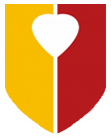|
Question content
|
 |
 |
 |
 |
 |
|
Identify which organ system the organs belong to and where they are found in the body.
|
 |
 |
|
|
|
|
Label the organelles on a yeast cell and bacteria cell and state how their structures are different.
|
 |
 |
|
|
|
|
Match the cell organelles to their functions
|
 |
 |
|
|
|
|
Identify differences between animal and bacterial cells.
|
 |
 |
|
|
|
|
Identify which cell oxygen will move into the fastest and by which process.
|
 |
 |
|
|
|
|
Identify what bacteria and viruses produce that make us feel ill.
|
 |
 |
|
|
|
|
Identify what type of microorganism antibiotics kill.
|
 |
 |
|
|
|
|
Identify what causes a new strain of pathogen to be produced.
|
|
 |
|
|
|
|
Identify which cell is a plant cell and give a reason for your answer.
|
 |
 |
|
|
|
|
Identify which cell is an animal cell and give a reason for your answer.
|
 |
 |
|
|
|
|
Identify which cell is a prokaryotic cell and give a reason for your answer.
|
 |
 |
|
|
|
|
Calculate the real size of cell using the magnification and image size given.
|
 |
 |
|
|
|
|
Identify the parts of the respiratory system and which direction gases move during gas exchange.
|
 |
 |
|
|
|
|
Describe the adaptations of the alveoli to help with gas exchange.
|
 |
 |
|
|
|
|
Name the part of the reproductive system that carries an egg to the uterus.
|
 |
 |
|
|
|
|
Name the part of the reproductive system that produces sperm.
|
 |
 |
|
|
|
|
Name the part of the reproductive system that produces the egg.
|
 |
 |
|
|
|
|
Name an example of a microorganism that can infect a cut.
|
 |
 |
|
|
|
|
Give one reason why wearing rubber gloves is important for a first aider when they treat a cut.
|
 |
 |
|
|
|
|
Give one reason why wearing rubber gloves is important for a person being treated by a first aider when they have a cut.
|
 |
 |
|
|
|
|
Identify a joint on a diagram.
|
 |
 |
|
|
|
|
Describe why we need joints in our skeleton.
|
 |
 |
|
|
|
|
Name the part of the skeleton that moves so that we can breathe.
|
 |
 |
|
|
|
|
Name the part of the skeleton that moves so that we can chew food.
|
 |
 |
|
|
|
|
Name the structures in the arm labelled.
|
 |
 |
|
|
|
|
Identify the direction the lower arm moves when a muscle contracts.
|
 |
 |
|
|
|



